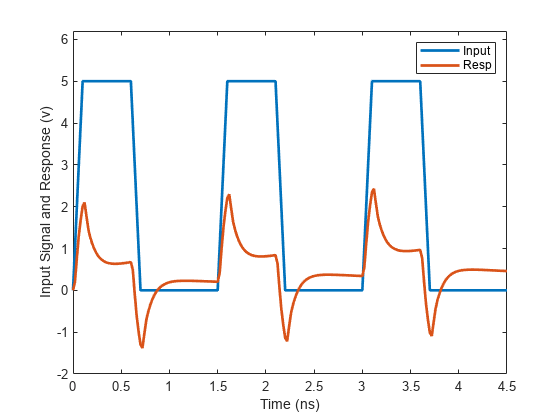pwlresp
Syntax
Description
[
computes the time response, tran,t] = pwlresp(h,signalTime,signalValue,tsim)tran, and time vector,
t, of a piecewise linear input signal. The time response is
calculated for a rational or rfmodel.rational
object, h, using the signal parameters, signalTime
and signalVlaue, over the simulation time, tsim.
[
computes the time response for the period of the input signal, tran,t] = pwlresp(h,signalTime,signalValue,tsim,tper)tper.
[
computes the time response across a set of time points that speed up the time response
computation. tran,t] = pwlresp(h,signalTime,signalValue,tsim,tper,flag)
Note
Use the flag input argument only for periodic signals. When you
use the flag input, the first element of tsim
vector should be 0.
Examples
Input Arguments
Output Arguments
Version History
Introduced in R2021a
See Also
rationalfit | freqresp | stepresp | timeresp
